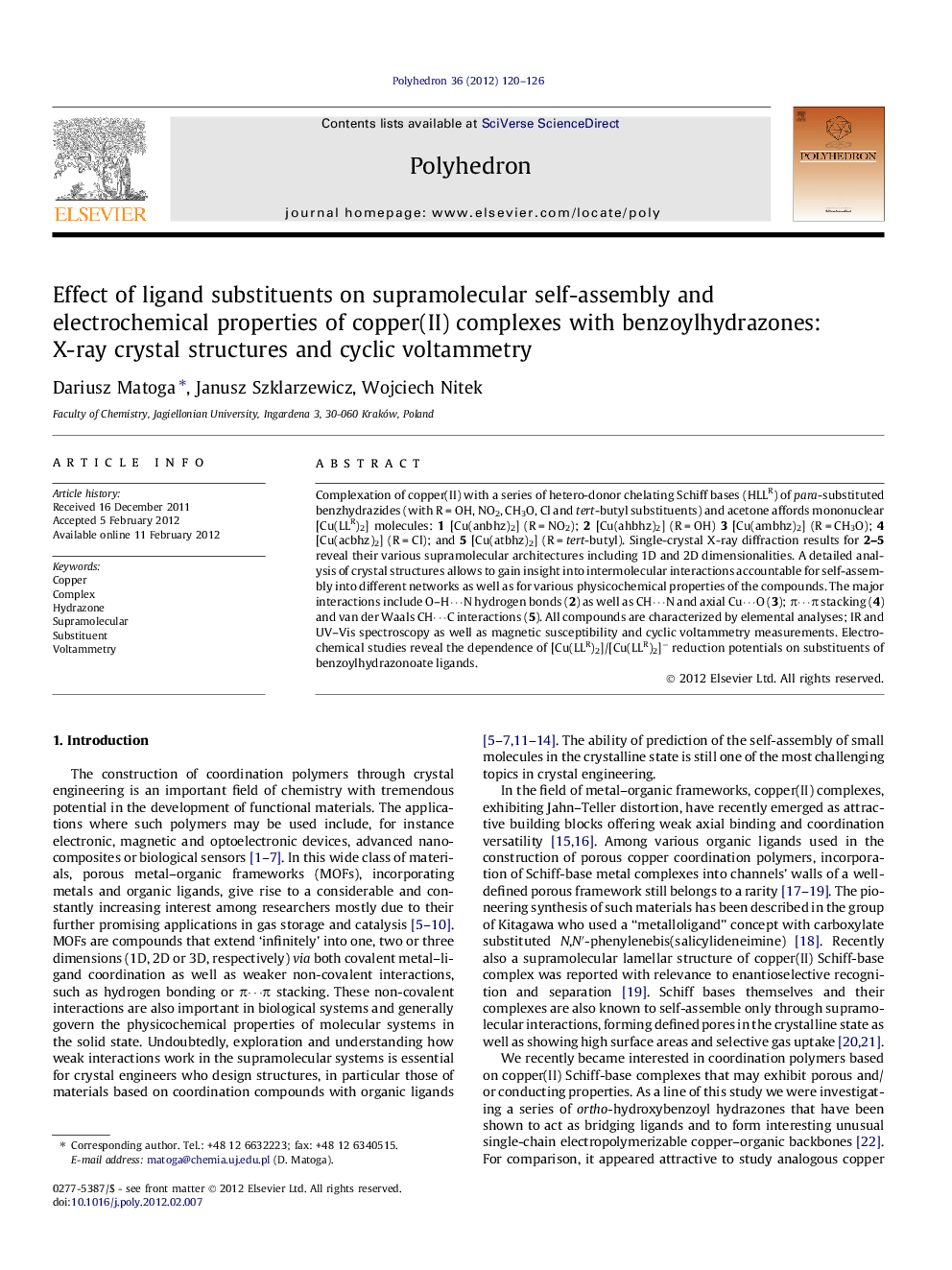| Article ID | Journal | Published Year | Pages | File Type |
|---|---|---|---|---|
| 1337610 | Polyhedron | 2012 | 7 Pages |
Complexation of copper(II) with a series of hetero-donor chelating Schiff bases (HLLR) of para-substituted benzhydrazides (with R = OH, NO2, CH3O, Cl and tert-butyl substituents) and acetone affords mononuclear [Cu(LLR)2] molecules: 1 [Cu(anbhz)2] (R = NO2); 2 [Cu(ahbhz)2] (R = OH) 3 [Cu(ambhz)2] (R = CH3O); 4 [Cu(acbhz)2] (R = Cl); and 5 [Cu(atbhz)2] (R = tert-butyl). Single-crystal X-ray diffraction results for 2–5 reveal their various supramolecular architectures including 1D and 2D dimensionalities. A detailed analysis of crystal structures allows to gain insight into intermolecular interactions accountable for self-assembly into different networks as well as for various physicochemical properties of the compounds. The major interactions include O–H⋯N hydrogen bonds (2) as well as CH⋯N and axial Cu⋯O (3); π⋯π stacking (4) and van der Waals CH⋯C interactions (5). All compounds are characterized by elemental analyses; IR and UV–Vis spectroscopy as well as magnetic susceptibility and cyclic voltammetry measurements. Electrochemical studies reveal the dependence of [Cu(LLR)2]/[Cu(LLR)2]− reduction potentials on substituents of benzoylhydrazonoate ligands.
Graphical abstractComplexation of copper(II) with a series of Schiff bases (HLLR) of para-substituted benzhydrazides (R = OH, NO2, CH3O, Cl and tert-butyl) and acetone affords [Cu(LLR)2] molecules. Single-crystal X-ray diffraction reveal their various supramolecular architectures with substituents acting as diverse synthons that govern both physicochemical properties of complexes and their self-assembly.Figure optionsDownload full-size imageDownload as PowerPoint slideHighlights► Five copper(II) compounds with para-substituted benzoylhydrazones have been prepared. ► Single-crystal X-ray diffraction reveal their various supramolecular architectures including 1D and 2D dimensionalities. ► Electrochemical studies reveal the dependence of reduction potentials on substituents of benzoylhydrazonoate ligands.
